Are you tired of the same old hot dogs and s’mores routine when it comes to campfire cooking? It’s time to elevate your outdoor culinary skills with tips and tricks from a seasoned chef. From mastering the perfect flame to creating delicious meals using only a few simple ingredients, this blog post will teach you everything you need to know about campfire cooking. Whether you’re heading out on a weekend camping trip or just enjoying an evening in your backyard, get ready to impress your taste buds (and your friends) with these tasty recipes and expert techniques. Let’s fire up that grill!
.
Introduction to Campfire Cooking
If you love spending time outdoors, there’s a good chance you’ve enjoyed a meal cooked over a campfire. Campfire cooking is a great way to enjoy the outdoors and bond with friends or family. Plus, it’s a fun experience.
If you’re new to campfire cooking, there are a few things you should know before you get started. First, you’ll need to choose the right location for your fire. You’ll also need to gather the right supplies, including hard wood, tinder, and kindling, don”t be afraid to use a fire starter it saves time and frustration And of course, you’ll need some food!
Once you have everything you need, it’s time to build your fire. Start by placing your tinder in the center of your fire pit. Then add your kindling on top of the tinder, don’t forget to use the starter. Once your fire is lit, add larger pieces of wood to keep it going strong.
Now that your fire is going strong…wait it's NOT time to start Campfire Cooking!
There are a few different ways to cook over a campfire. You can use a cast iron skillet or dutch oven for more complex dishes, cook on a grill grate, keep it simple with foil packets or hot dogs on a stick. Whatever you decide to make, be sure to cook slowly and evenly to avoid burning your food.
With these tips in mind, you’re ready to start campfire cooking! So what are you waiting for? Gather your supplies and give it a try!
Choosing the Right Type of Campfire
If you’re new to campfire cooking, choosing the right type of fire to build can be daunting. But don’t worry, we’re here to help. In this section, we’ll walk you through the different types of campfires and help you choose the right one for your needs.
There are three main types of campfires: wood fires, charcoal fires, and gas fires. Each has its own benefits and drawbacks, so it’s important to choose the right one for your situation.
Wood fires are the traditional choice for campers and are great for cooking food. However, they can be difficult to control and may produce a lot of smoke. If you’re new to campfire cooking, we recommend starting with a smaller wood fire until you get the hang of it.
Charcoal fires are ideal for grilling food. They’re easy to control and produce little smoke, making them perfect for cooking meat or vegetables. If you’re not experienced with grilling food, we recommend starting with a small charcoal fire until you get the hang of it.
Gas fires are the easiest type of fire to control and produce very little smoke. They’re perfect for cooking food that requires precise temperature control, such as eggs or fish. If you’re new to campfire cooking, we recommend starting with a gas grill until you get the hang of it.
Selecting your Tools and Equipment for Campfire Cooking
Assuming you will be cooking over an open fire, there are a few key tools and pieces of equipment you will need to ensure a successful meal.
First, you will need a sturdy grill or grates to place over the fire. This will be your main cooking surface, so make sure it is big enough to accommodate all the food you plan on making.
Next, you’ll need some basic cookware. A pot or Dutch oven for boiling water or simmering stews, a cast iron pan or skillet for potatoes and vegetables.
Finally, don’t forget the all-important utensils. Tongs, spatulas, and wooden spoons are must-haves, while knives might come in handy depending on what you’re making. And don’t forget bowls and plates for serving!
The Basics of Building a Fire
Before you can get started cooking over an open flame, you need to build a fire. Here are the basics of building a campfire:
- Choose the right spot:
- Build a foundation:
- Add some tinder:
- Add your fuel:
- Light it up:
Cookware Considerations
When choosing cookware for your campfire cooking needs, there are a few things to consider. First, what kind of food will you be cooking? If you plan on doing a lot of cooking over the fire, then you’ll need something that can handle the heat. Second, how many people will you be cooking for? If you’re feeding a large group, then you’ll need something that can accommodate a lot of food. Finally, what is your budget? There are many great options out there, so find something that fits your needs and your budget.
Once you’ve considered all of these factors, it’s time to choose your cookware. There are many great options out there, so choose something that will work best for you. If you’re looking for something durable and long-lasting, then cast iron is a great option. If you’re looking for something that’s more lightweight and easy to carry, then aluminum or stainless steel may be better choices.Whatever you choose, make sure it’s able to handle the heat of the fire and the weight of the food. With the right cookware, you’ll be able to master the art of campfire cooking in no time!
Food Safety Tips to Follow for Campfire Cooking
When cooking over a campfire, it’s important to follow some basic food safety guidelines. Here are a few tips to keep in mind:
• Use clean utensils and cookware. If you’re using reusable cookware, make sure it’s clean before you start cooking. And if you’re using disposable cookware, make sure it’s not damaged or cracked.
• Cook food fully. Make sure your food is cooked all the way through before you eat it. This is especially important with meats and poultry. Using a meat thermometer is very helpful.
• Keep hot food hot and cold food cold. When serving food, keep hot food hot and cold food cold. Hot food should be kept at 140 degrees Fahrenheit or above, and cold food should be kept at 40 degrees Fahrenheit or below.
• Don’t cross-contaminate. Keep raw meat, poultry, and seafood separate from other foods while you’re cooking to avoid cross-contamination. And always wash your hands after handling raw meat, poultry, or seafood.
Recipes for Delicious Campfire Meals
There’s something about cooked food that just tastes better when it’s been prepared over a campfire. Whether you’re cooking for yourself or for a group, these recipes will ensure that your campfire meals are both delicious and satisfying.
One-Pot Wonders:
One-pot meals are ideal for campfire cooking, as they minimize the amount of dishes you have to wash at the end of the meal. Just throw everything into one pot and let the heat from the fire do its work. Try recipes for Chili, which is hearty, filling and can be easily customized to your liking.
Chili isn’t the only one-pot wonder that can be made over a campfire – stews, soup, pasta dishes, and even desserts can all be cooked in just one pot. So get creative and see what you can come up with!
Grilled Goodness:
Nothing says summer like grilled food, and there’s no reason why you can’t enjoy grilled meals while camping. Fire up the grill and cook up some juicy burgers or steaks, or try something a little different like grilled fruit or vegetables.
Of course, you’ll need some sides to go along with your grilled main course. Potato salad, coleslaw, beans – whatever you like! – will round out your meal nicely. And don’t forget the roasted marshmallows for dessert
Dessert Ideas For Your Campfire Cookout
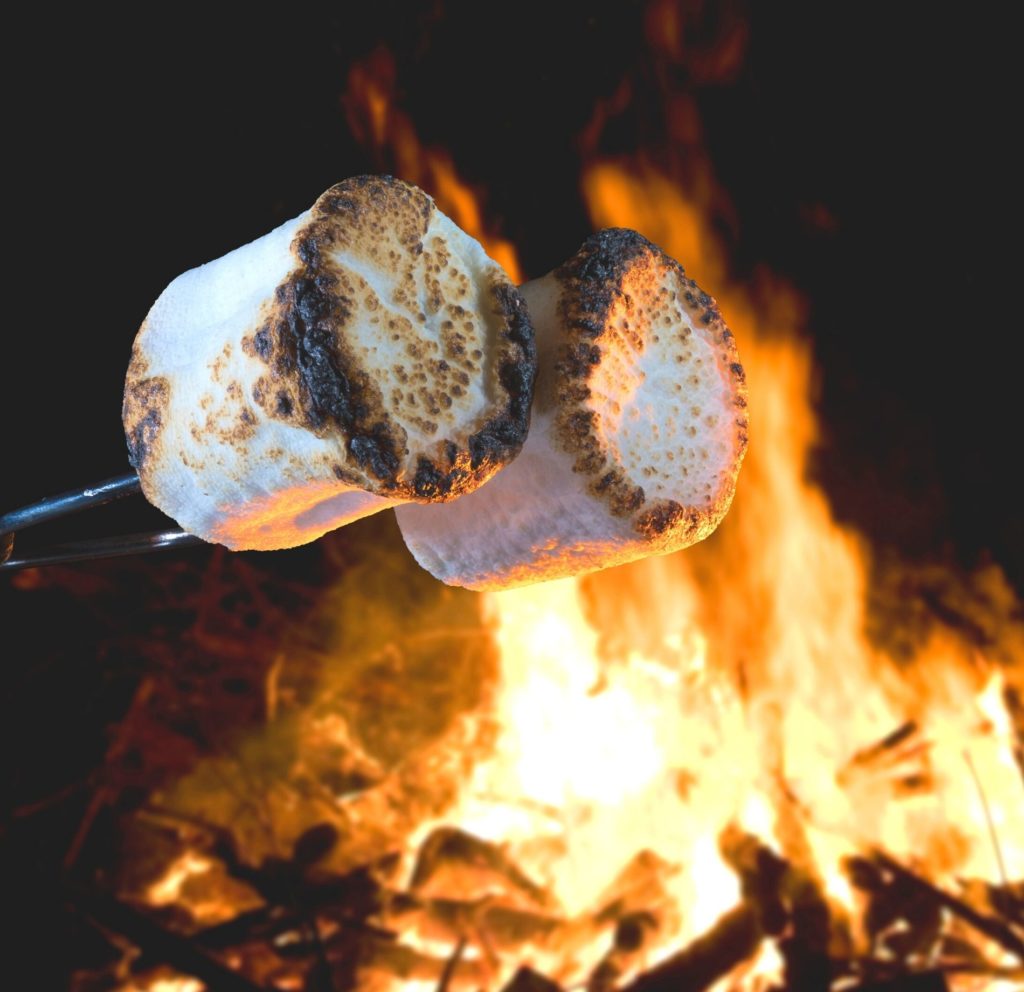
One simple way to upgrade your campfire cookout is to ditch the standard s’mores in favor of a gourmet dessert. Here are a few ideas to get you started:
1. Chocolate-dipped fruit: This is a healthy and easy option that will satisfy your sweet tooth. Simply dip your favorite fruits (strawberries, bananas, etc.) in melted chocolate and let them cool on a piece of wax paper.
2. S’mores parfait: Layer graham crackers, chocolate pudding, and mini marshmallows in a jar for an elegant take on the classic s’more.
3. Campfire cones: These are basically ice cream cones filled with your favorite toppings (fruit, nuts, candy, etc.) and then grilled over the fire until the cone is crispy.
4. Skillet cookie: Another easy option is to make a big batch of cookie dough and bake it in a cast iron skillet over the fire. Top with marshmallows or ice cream for extra decadence.
Cooling down: Clean Up Tips After the Fire Is Out
Bellies full with food and dessert and you’re ready to clean up, there are a few things you should keep in mind. First, never leave food or dishes lying around. Food attracts animals and insects, which can lead to disease and contamination. Second, if you have any leftovers, make sure to properly store them in airtight containers. Finally, always make sure your campfire area is clean before you leave. This means picking up any trash, sticks, or leaves that may have fallen during your cooking session. A clean campsite is a happy campsite!
Make it an Experience!
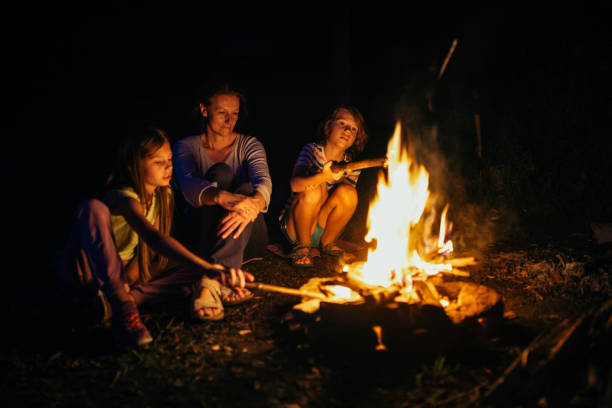
After the cooking is done and everything is cleaned up, add some more wood to the fire, gather the chairs to talk, tell stories or sit quietly and look at the stars. It’s time to Enjoy The Journey.
Conclusion
Whether you are looking to get better at your campfire cooking skills or want to learn the art of creating delicious meals around a campfire, we hope that this article has given you some useful tips and tricks. If you still feel overwhelmed, we’ve included not only a video, but a podcast in this article so you can watch or hear it from a chef that actually created an amazing meal with us. From selecting the right ingredients, learning various cooking methods and mastering the timing needed for each method, it takes time and practice to become an expert camp chef. But with dedication and enthusiasm towards mastering the craft of campfire cooking, no recipe is too difficult! Enjoy yourself outdoors and whip up some tasty treats over your next camping trip. Bon Appétit!
.
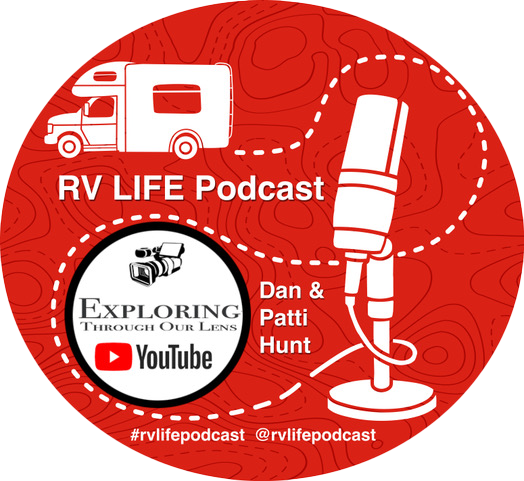
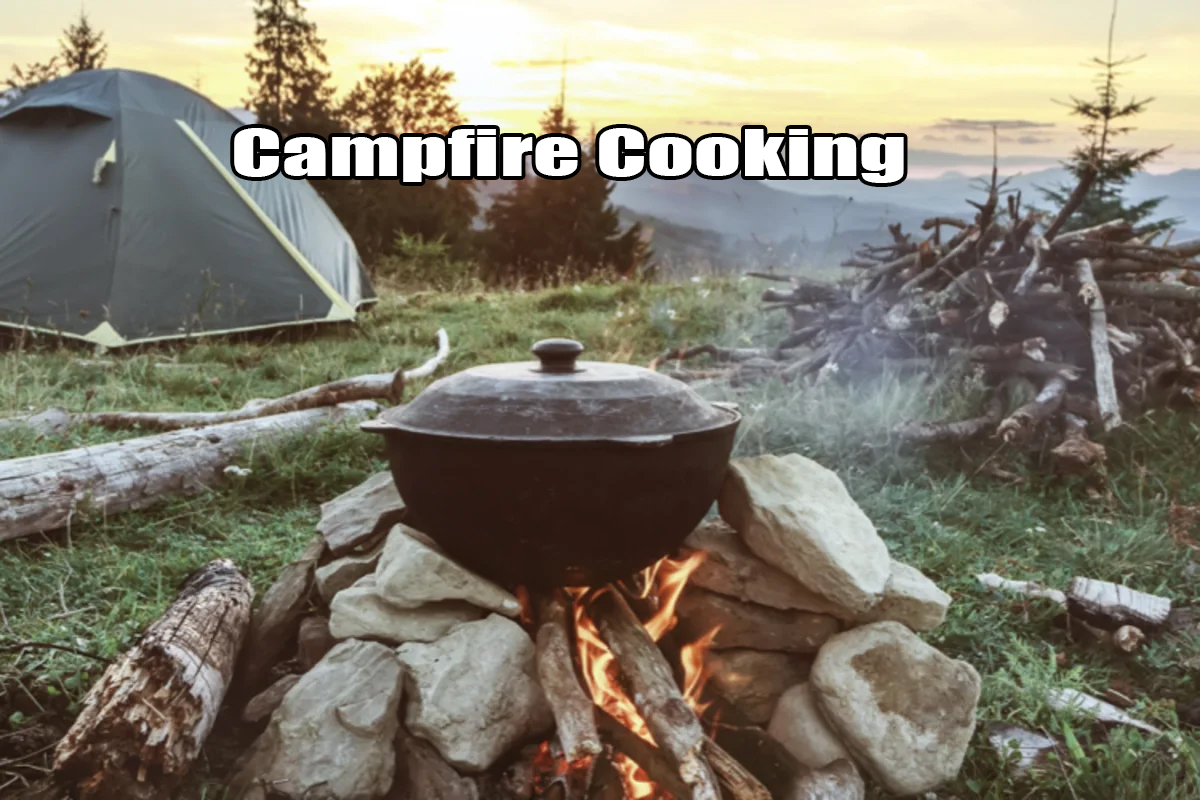

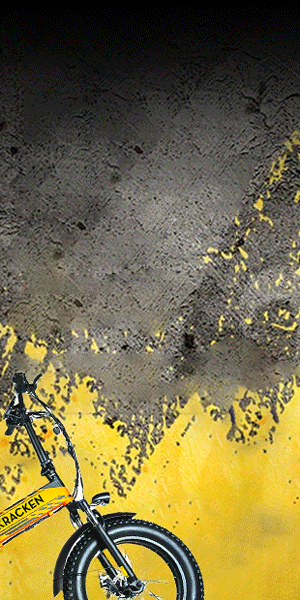






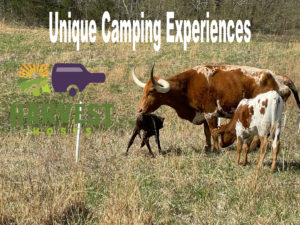

One Response
Engaging in outdoor cooking, whether grilling marshmallows or preparing a full meal, adds a delicious dimension to the camping experience.